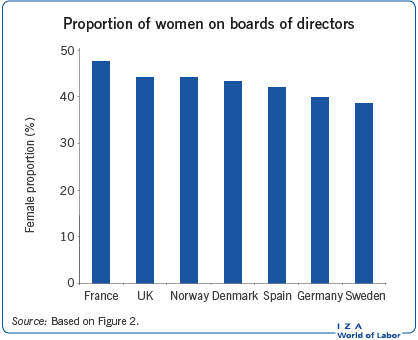Elevator pitch
Arguments for increasing gender diversity on corporate boards of directors by gender quotas range from ensuring equal opportunity to improving firm performance. The introduction of gender quotas in a number of countries, mainly in Europe, has increased female representation on boards. Current research does not unambiguously justify gender quotas on grounds of economic efficiency. In many countries, the number of women in top executive positions is limited, and it is not clear from the evidence that quotas lead to a larger pool of female top executives, who, in turn, are the main pipeline for boards of directors. Thus, other supplementary policies may be necessary if politicians want to increase the number of women in senior management positions.

Key findings
Pros
Quotas increase the number of women on boards of directors (BoD).
The decision-making process improves with greater gender diversity on boards.
There are positive spillover effects from women on BoD to gender diversity among top executives.
Having female top executives may positively affect women's career development at lower levels in the organization.
Cons
Boards with diverse members or members who differ from the company’s senior executive management may experience communication problems internally and with management.
Quotas may imply overburdening the small number of qualified women or accept less experienced candidates.
Quotas seem to have little positive effect on increasing the pool of women with senior executive experience.
Despite a few positive outcomes, most short-term performance effects of female board members are insignificant or negative.